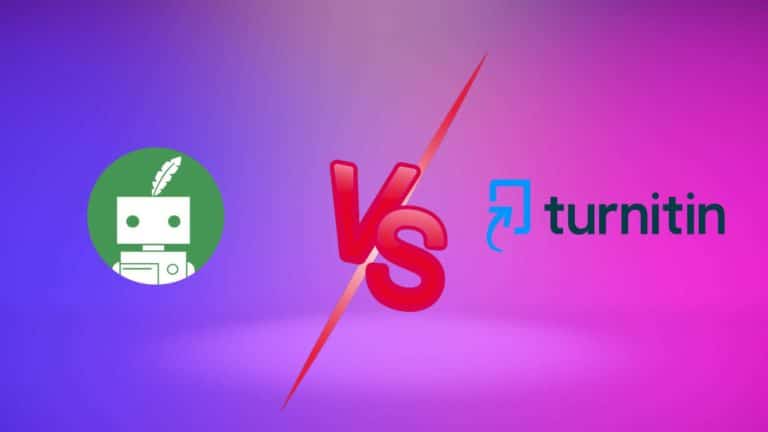Can Aiseo Pass Originality.ai Detection?
In today’s digital landscape, content creators often ask: Can AiseoAI bypass Originality.ai detection? With growing concerns about the accuracy of Originality.ai in tracking AI-written material, there’s an increasing demand to ensure original and authentic content creation.
This blog post will guide you through how AI-generated content detectors work, along with tips on avoiding such detections as a writer. Stay tuned; we’re about to demystify the world of AI and plagiarism detection!
Key Takeaways
- AiseoAI, an advanced AI content writing tool, may not be able to completely pass Originality.ai’s detection, which has a 94% accuracy rate in spotting popular AI models.
- To avoid being flagged by AI content detection tools like Originality.ai, writers should incorporate personalization and originality in their writing, avoid repetitive language patterns, rewrite or paraphrase sections of the text, and self-check their work for potential issues.
- While AiseoAI offers impressive capabilities in generating high-quality content efficiently, it is important for writers to strike a balance between utilizing AI tools and maintaining authenticity to navigate the field of AI-powered content creation effectively.
Overview of AI Content Detection Tools
AI Content Detection Tools include AISEO, Content at Scale, Originality AI, Hugging Face, and GLTR.
AISEO
AISEO is an advanced artificial intelligence tool known for streamlining content creation. By generating high-quality content, it helps writers develop engaging blog posts or website pages within a short span of time.
In the face of AI detection tools like Originality.ai, which has a 94% accuracy rate at spotting GPT-3 generated copy, AISEO’s effectiveness stands contested. As Originality.ai continues to evolve with claims of detecting 99.5% AI-generated content accurately, users need to balance their reliance on AI tools and add personal touches and unique spins to their writings manually when using AISEO for optimal results.
Content at Scale
Content at Scale is an AI-powered content generation tool that allows businesses and individuals to create high-quality written content efficiently and effortlessly. By utilizing advanced natural language processing algorithms, Content at Scale can generate large volumes of text quickly while maintaining coherence and readability.
However, like other AI content writing tools, it is important to be aware of the potential for detection by AI content detection tools such as Originality.ai. While Content at Scale may produce unique and well-written content, there is still a possibility that it could be flagged as generated by AI.
It is crucial for writers to understand the limitations of these tools and take necessary steps to avoid detection when using AI-generated content in their work.
Originality AI
Originality AI is a powerful tool used for AI content detection, which analyzes the language and structure of the content to determine if it has been generated by AI. While there are concerns about its accuracy, Originality AI is capable of detecting popular models like GPT-3, GPT-3.5, and ChatGPT with an impressive 94% accuracy rate.
However, it’s important to note that this tool may result in more false positives than false negatives. Despite its effectiveness, Originality AI is not completely foolproof and may occasionally detect human-written content as being generated by AI.
Regardless, writers can still take measures to avoid detection by incorporating personalization and originality in their writing and using tools like QuillBot to revise their text without altering its core meaning.
Hugging Face
Hugging Face is another AI content detection tool worth mentioning in the realm of bypassing AI content detection. It’s an open-source platform that provides access to a wide range of natural language processing models, including popular ones like GPT-3 and BERT.
While Hugging Face primarily focuses on model sharing and deployment, it can also be used effectively to generate human-like text that may escape the scrutiny of AI detectors. Its versatility and vast collection of models make it a valuable resource for writers looking to avoid being flagged by AI content detection tools.
GLTR
GLTR is another AI content detection tool that can help writers determine if their content has been generated by an AI. It stands for “Good, Bad, and Ugly,” and it uses a transformer-based language model to analyze text and identify patterns commonly associated with AI-generated content.
GLTR focuses on detecting the presence of unnatural phrases or word combinations that may indicate automated writing. While it may not be foolproof, GLTR adds an extra layer of scrutiny to ensure your content stands up against AI detection tools like Originality.ai.
Tips on How to Avoid AI Detection as a Writer
Avoid relying solely on AI to write your content, incorporate personalization and originality in your writing, rewrite and paraphrase your content, and self-check your work for any potential issues.
Don’t rely solely on AI to write your content
To avoid detection and ensure your content passes AI content detection tools, it’s essential not to rely solely on AI to write your content. While AI writing tools can be helpful for generating ideas and assisting with the writing process, it’s important to incorporate your own personalization and originality in the text.
By infusing your unique voice and perspective into the content, you reduce the chances of it being flagged as AI-generated by detection systems like Originality.ai. Additionally, rewriting and paraphrasing sections of the text can help improve its authenticity and decrease the likelihood of detection.
Combining human creativity with AI assistance is key to producing high-quality content that bypasses AI content detection effectively.
Avoid repetitive language
To avoid detection by AI content detectors, it’s crucial to steer clear of repetitive language in your writing. AI algorithms are designed to spot patterns and similarities in text, so using the same phrases or words repeatedly can raise red flags.
Instead, strive for variety and diversity in your language choices. Opt for synonyms, alternate sentence structures, and engage different vocabulary to keep your content fresh and original.
By avoiding repetition, you’ll not only make your writing more engaging but also decrease the chances of being flagged as AI-generated content by detection tools like Originality.ai.
Incorporate personalization and originality in your writing
To avoid AI detection as a writer, it is crucial to incorporate personalization and originality in your content. AI-generated text often lacks the unique voice and perspective that human writers bring to their work.
By infusing your writing with personal anecdotes, insights, and experiences, you can create a more authentic and engaging piece that is less likely to be flagged by AI content detectors.
Additionally, focusing on original ideas and perspectives will help set your content apart from other generic or duplicate pieces generated by AI tools. Remember that while some AI tools are becoming increasingly accurate at detecting AI-generated content, they still have limitations in deciphering the intricacies of human creativity and individuality.
Rewrite and paraphrase your content
To avoid AI detection as a writer, it’s important to rewrite and paraphrase your content. Here are some tips to help you with this:
- Use tools like QuillBot: QuillBot is an AI-powered tool that can assist you in revising your text without changing its fundamental meaning. It can help you avoid using repetitive language and make your content more unique.
- Change sentence structure: Instead of using the same sentence structure throughout your content, vary it by using different sentence types – simple, compound, complex, etc. This will make your writing appear more natural and less likely to be flagged as AI-generated.
- Replace synonyms: Instead of repeating the same words or phrases multiple times, use synonyms to add variation to your writing. It will not only help you avoid detection but also enhance the readability of your content.
- Add personalization: Injecting personalization into your writing can make it more engaging and authentic. Incorporate anecdotes, personal experiences, or examples to add a human touch to your content.
- Paraphrase information from multiple sources: If you need to include factual information in your content, make sure to paraphrase it from multiple sources rather than relying on a single one. This will help create originality and reduce the chances of detection.
Self-check your work for any potential issues
To avoid AI detection as a writer, it’s crucial to self-check your work for any potential issues. Take the time to review your content and make sure it doesn’t contain any repetitive language or phrases that could raise red flags with AI content detectors.
Incorporate personalization and originality into your writing by infusing unique perspectives and insights. Additionally, consider rewriting and paraphrasing sections of your text to add variation and avoid similarity with existing AI-generated content.
By thoroughly scrutinizing your work, you can minimize the chances of being flagged by AI detection tools like Originality.ai while maintaining the authenticity of your writing.
Can AiseoAI Pass Originality. ai Detection?
AiseoAI’s ability to bypass Originality.ai detection is a topic of interest and will be explored in this section.
Explore the capabilities and limitations of AiseoAI
AiseoAI is an advanced AI content writing tool that has gained popularity for its ability to generate high-quality and engaging content. However, when it comes to bypassing AI content detection, AiseoAI has certain limitations.
While it incorporates sophisticated algorithms and natural language processing capabilities, it may still be detected by tools like Originality.ai.
Originality.ai is a powerful tool used for AI detection, with a reported accuracy rate of 94% in detecting popular models such as GPT-3, GPT-3.5, and ChatGPT. It analyzes the language and structure of the content to determine if it was generated by AI.
This means that AiseoAI-generated content can potentially be flagged.
It’s worth mentioning that no AI writing tool can completely guarantee avoiding detection by other AI-powered tools like Originality.ai. However, there are techniques writers can employ to reduce the chances of being recognized as AI-generated content.
These include not relying solely on AI to write their content, avoiding repetitive language patterns commonly found in machine-generated text, incorporating personalization and originality into their writing style, rewriting or paraphrasing sections of the text while retaining its meaning, and self-checking work for any potential issues before submitting it.
Discuss the effectiveness of Originality.ai in detecting AI-generated content
Originality.ai is an AI detection tool that aims to identify AI-generated content accurately. It analyzes the language and structure of the text to determine if it was written by a human or generated by AI.
While Originality.ai is highly accurate, there are concerns about false positives, meaning it may sometimes detect human-written content as AI-generated. However, with an accuracy rate of 94% in detecting GPT-3, GPT-3.5, and ChatGPT, it proves to be effective in spotting AI-generated content.
Although not completely foolproof, Originality.ai remains one of the top tools for detecting AI content and plays a vital role in ensuring authenticity and originality online.
Conclusion
In conclusion, while AiseoAI is a powerful AI content writing tool, it may not be able to completely pass Originality.ai’s detection. The accuracy of Originality.ai in detecting AI-generated content raises concerns for writers relying on AI tools.
However, by following the tips mentioned earlier and using anti-AI detection tools like Agility Writer, writers can increase their chances of bypassing Originality.ai’s detection and ensuring their content remains undetected as AI-generated.
It’s crucial for writers to continually adapt and stay one step ahead in this evolving landscape of AI content detection.
FAQs
1. What is Originality.ai Detection?
Originality.ai Detection is a software tool that analyzes the uniqueness and originality of written content by comparing it to existing published materials on the internet.
2. Can AiseoAI pass Originality.ai Detection?
AiseoAI’s ability to pass Originality.ai Detection depends on several factors, including the quality of its training data and algorithms. While AiseoAI strives to generate high-quality, original content, there is no guarantee that it will always pass such detection systems.
3. How does AiseoAI ensure originality in its generated content?
AiseoAI aims to maintain originality in its generated content by using sophisticated language models and algorithms that prioritize creating unique text based on input instructions and prompts from users. However, it’s important for users to review and verify the output for their specific needs.
4. Are there any limitations or risks associated with using AI-generated content like AiseoAI?
Yes, there are potential limitations and risks when using AI-generated content like AiseoAI. While efforts are made to ensure accuracy and originality, there may still be instances where plagiarism or similarities with existing works occur. It’s advisable for users to exercise caution, conduct thorough reviews, and cite sources properly when using AI-generated content in order to avoid copyright issues or legal complications.





